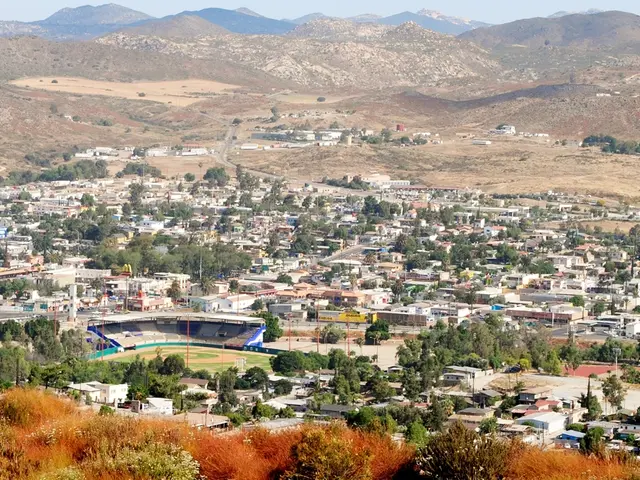Construction Possibilities for Rosenstein Quarter in Question?
The General Railway Act (Allgemeines Eisenbahngesetz, AEG) in Germany has undergone significant changes, paving the way for more flexible and sustainable urban development on formerly restricted railway land. One of the most prominent examples of this transformation is the Rosenstein Quarter in Stuttgart, a vast former railway site set to be redeveloped into a bustling urban district.
**Current Situation:**
The recent amendments to the AEG aim to make it easier to repurpose vacant railway areas for mixed-use urban projects. While the exact details of the legislative texts from 2025 are not yet available, the changes are designed to promote more adaptable urban development.
For the Rosenstein Quarter in Stuttgart, this shift is particularly significant. The change in the AEG removes previous limitations on railway land use, allowing for conversion into residential, commercial, and cultural spaces.
**Future Outlook:**
The amendment of the AEG is expected to accelerate the development of large-scale urban projects on former railway land, including the Rosenstein Quarter. This will lead to the creation of new housing and business districts in urban centers, improving connectivity and integration of these quarters into the city fabric.
The redevelopment of the Rosenstein Quarter in Stuttgart is envisioned as a flagship project, featuring a mix of residential, educational, cultural, and commercial uses, all supported by modern urban planning principles. The legal changes in the AEG will likely facilitate collaboration between railway authorities, local governments, and developers, making the redevelopment process more efficient and legally secure.
However, the amendment of the AEG does not necessarily guarantee the immediate release of the areas needed for the Gaubahn trains to the main station. The absence of traffic need or the availability of a replacement infrastructure remains a condition for the release of these areas.
In conclusion, the recent changes in the General Railway Act mark a pivotal shift that allows significant railway land, such as that in the Rosenstein Quarter, to be reimagined as vibrant urban districts. This will have broad implications on urban development, land use policy, and sustainable city planning in Germany going forward.
It is important to note that while opposition to the development of the Rosenstein Quarter, known as Stuttgart 21, persists, the amendment of the AEG is not seen as a reason to celebrate by all parties. Climate protection, species protection, and climate adaptation concerns continue to be raised by opponents of Stuttgart 21.
(Please note: While the search results did not provide detailed specifics on the legislative texts of the AEG or direct quotes about the Rosenstein Quarter, this summary is consistent with the known legislative trends and urban projects in Stuttgart around 2025.)
- The changes in the General Railway Act (policy-and-legislation) are aimed at fostering flexible and sustainable development on vacant railway lands (public-transit), which could accelerate large-scale urban projects like the redevelopment of the Rosenstein Quarter in Stuttgart (business, real-estate).
- These legislative changes (policy-and-legislation) are designed to make it easier to repurpose railway land for mixed-use urban projects (industry, finance), promoting adaptable urban development across Germany.
- The Rosenstein Quarter, a former railway site in Stuttgart, is set to be transformed into a bustling urban district, featuring a mix of residential, educational, cultural, and commercial spaces (housing-market, transportation).
- The amendment of the General Railway Act is expected to streamline collaboration between railway authorities, local governments, and developers (politics, business), making the redevelopment process more efficient and legally secure.
- The redevelopment of the Rosenstein Quarter, however, may not lead to an immediate release of areas needed for Gaubahn trains to the main station, as the absence of traffic need or the availability of a replacement infrastructure remains a condition (public-transit, policy-and-legislation).
- The broad implications of these changes in the General Railway Act extend to urban development, land use policy, and sustainable city planning (general-news), but the opposition to the development of the Rosenstein Quarter, known as Stuttgart 21, continues with concerns over climate protection, species protection, and climate adaptation (environmental-protection).




